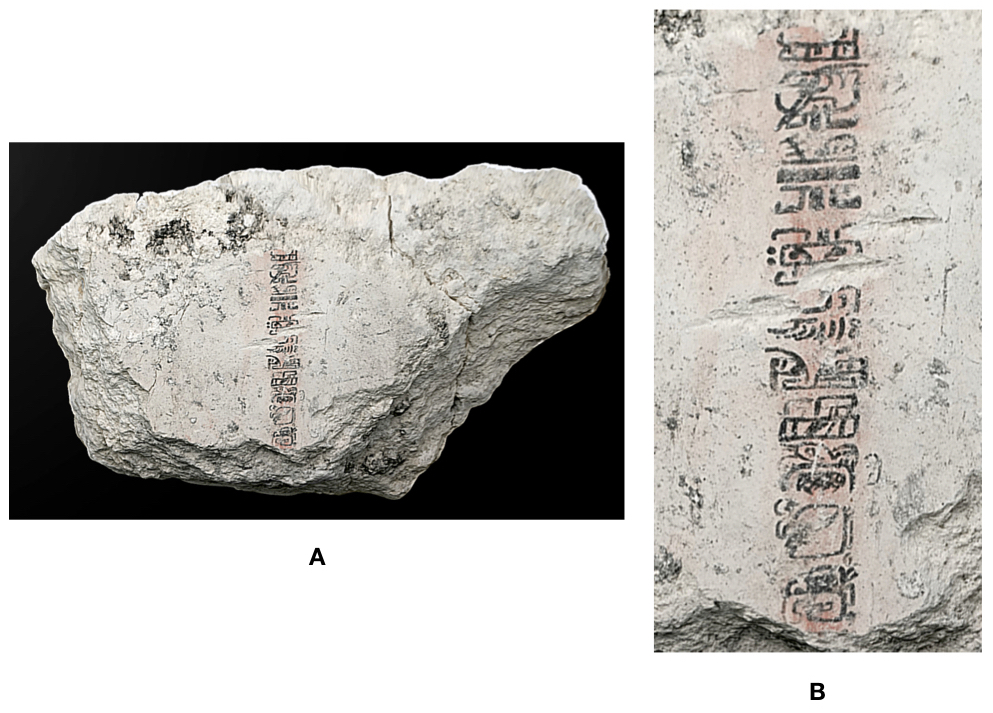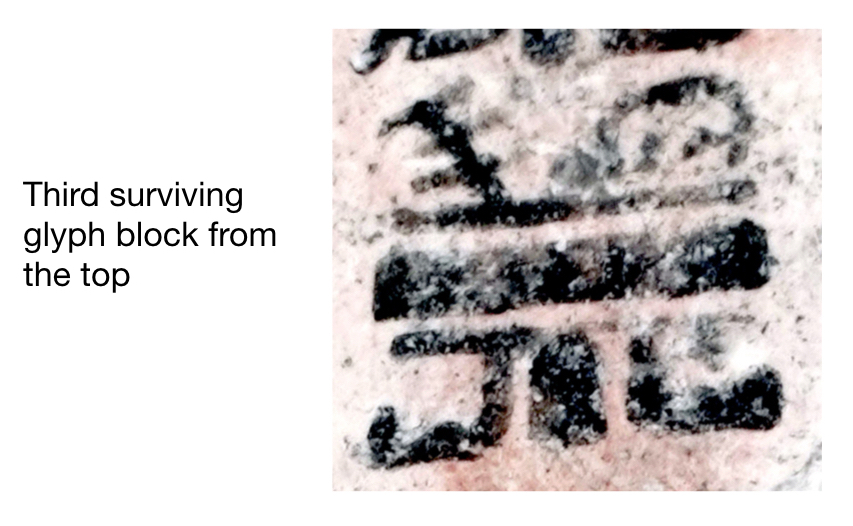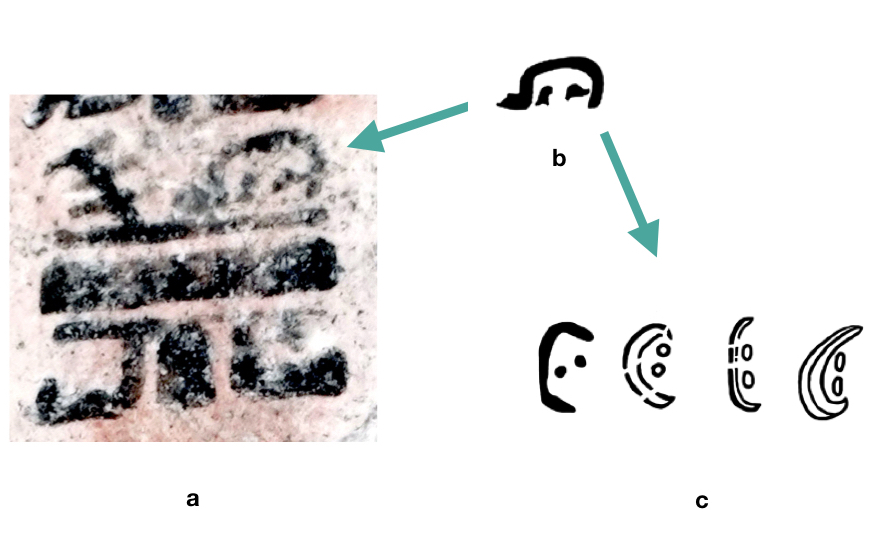Two Instances of T1ʔu on the Painted Stone Block from San Bartolo Sub-V: Reviewing Giron-Ábrego (2015)
David F. Mora-Marín
davidmm@unc.edu
University of North Carolina
Chapel Hill
1/16/2021
In my most recent blog post (Mora-Marín 2020), I proposed the identification of an early design of T1/HE6, the syllabogramʔu, on the painted stone block from San Bartolo Sub-V (Saturno, Stuart, and Beltrán 2006), dated to ca. 300-200 BCE. In that note I failed to cite Mario Giron-Ábrego’s (2015) article on Mesoweb where he proposed the identification of the same design of T1 in a different part of the same text. By means of this note, I would like to apologize for that failure, and rectify it by reviewing Giron-Ábrego’s discussion on the matter in light of my more recent identification. But before proceeding, I will reuse Figure 1 from my previous post in order to refer to parts of the text. The image in the Figure 1 is a high-resolution orthomosaic, that is, “a 3D-model-based combo of overlapping photographs reflecting average values of overlapping pixels,” prepared by Alexandre Tokovinine and published online 2/13/18 (Tokovinine 2018), and which the reader may consult here. The text is likely incomplete on both ends. In fact, Tokovinine’s rendering allows for the identification of traces of another glyph below the bottommost full glyph.
Figure 1
In his 2015 article, Giron-Ábrego focused on the long-lipped head glyph seen at the very bottom of the surviving text. However, he discussed in detail most of the text, including the third glyph block, seen in Figure 2, which he had also studied in an earlier article (Giron-Ábrego 2012), where he had suggested that the first sign could constitute an example of T51 ta/TA, and that the entire glyph block could function to represent a count of k’atuns.
In his more recent article, Giron-Ábrego suggests that this glyph block could be composed of the following signs: ta-FIVE-?KATUN. He continues (2015:7):
Upon closer inspection of pA3, based on published photographs and drawings, it is possible that the element to the right of the locative ta is a small representation of an archaic and calligraphic T1 u glyph, which in Classic-period inscriptions often indicates the third-person singular preconsonantal ergative/possessive pronoun. The superfix clearly shows a bracket or C-like shape, engulfing two dot-like elements. These traits are also diagnostic of some of the earliest variants of T1 […].
Figure 3 illustrates the comparison made by Giron-Ábrego (2015) reutilizing the image in Figure 2 above (Figure 3a), this time juxtaposed to a drawing of the sign in question by David Stuart (Figure 3b) and the early examples of T1 ʔu (Figure 3c) adduced by that author (2015:Figure 8c). Note that the San Bartolo example would agree with the other early examples in the C-shaped bracket, the two dots, and the lack of a central, triangular element.
Figure 3
If correct, this identification by Giron-Ábrego, plus the more recent one offered in my previous note (Mora-Marín 2020), illustrated in Figure 4, would contribute significantly to our understanding of this early text from San Bartolo, given that the more likely function of the early form of T1 ʔu is the spelling of the u- ‘third person singular ergative/possessive’ proclitic, which would facilitate any attempt at a linguistic analysis of the text.
Figure 4
To sum up, it is entirely possible that the text painted on the San Barolo Sub-V stone block could bear two instances of the early variant of T1 ʔu characterized by a C-shaped bracket, two dots, and no central triangular element, a significant addition to our understanding of this text, as it opens up possibilities for its grammatical analysis.
References
Giron-Ábrego, Mario. 2012. An Early Example of the Logogram TZUTZ at San Bartolo. Wayeb Notes 42.
Giron-Ábrego, Mario. 2015. On a Preclassic Long-Lipped Glyphic Profile. Mesoweb: www.mesoweb.com/articles/giron-abrego/Giron-Abrego2015.pdf.
Mora-Marín, David F. 2020. A Previously Unidentified Example of T1/HE6 ʔu on the Painted Stone Block from San Bartolo Sub-V. Notes on Mesoamerican Linguistics and Epigraphy 11. https://davidmm.web.unc.edu/2020/12/12/note-11/.
Tokovinine, Alexandre. 2018. “Painted inscription, San Bartolo.” Licensed under Creative Commons Attribution. URL: https://skfb.ly/6VzQF.



